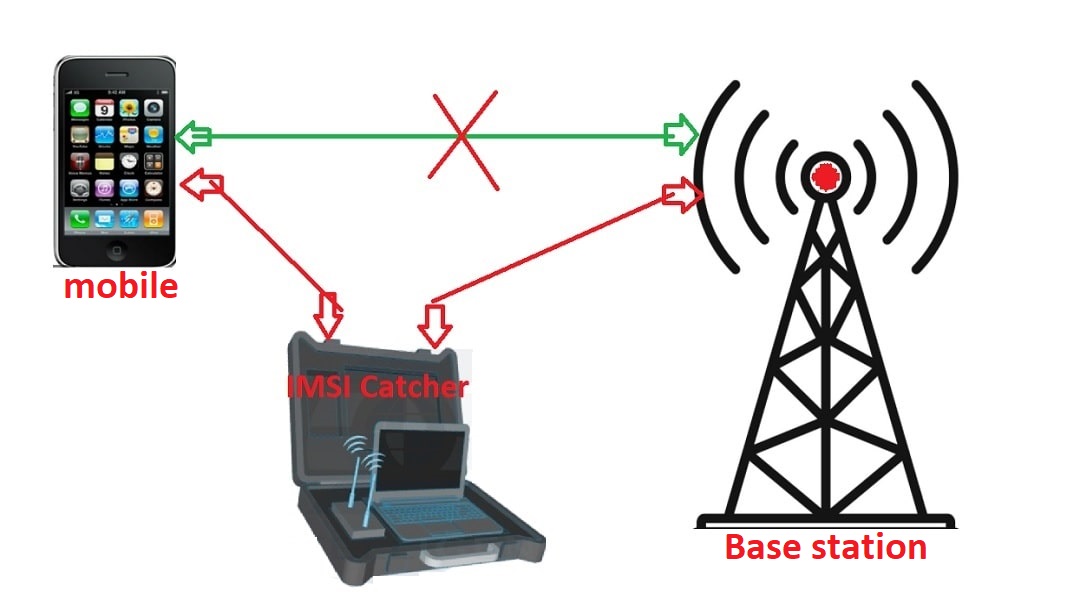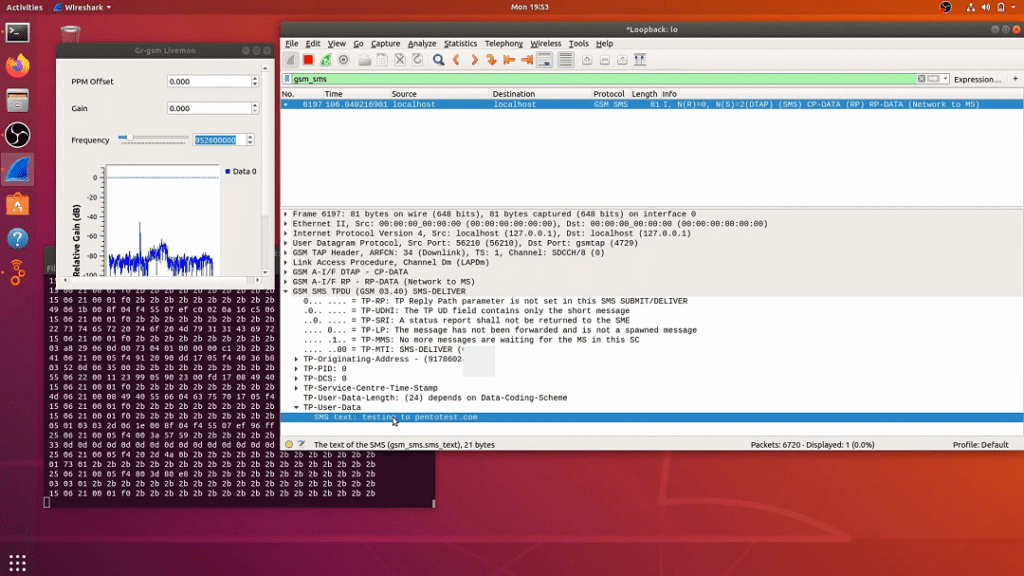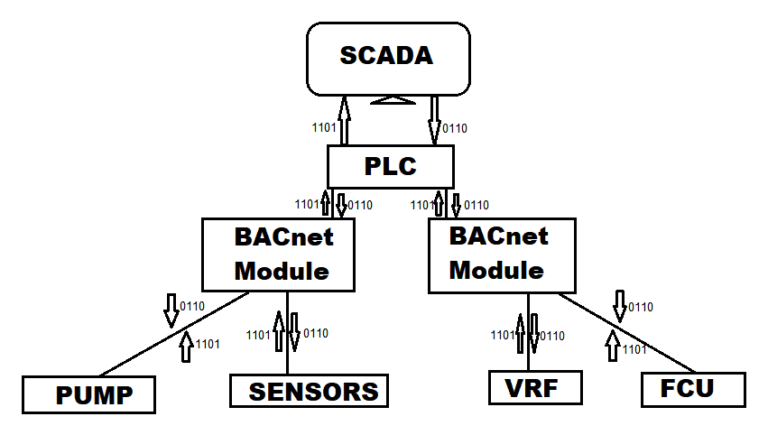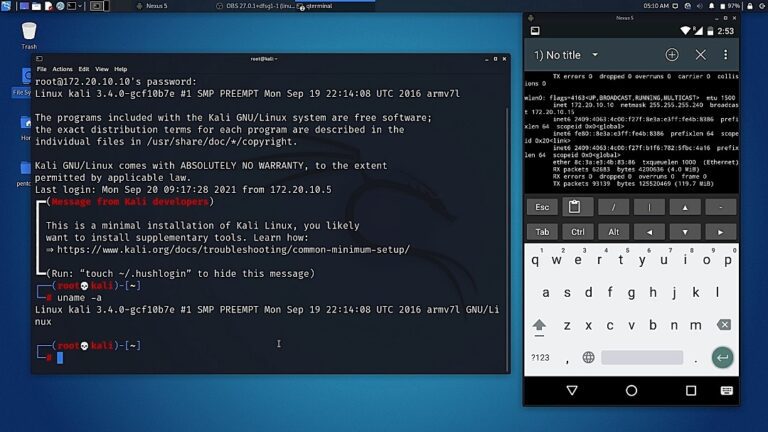
How To Sniffing Calls, SMS, And Mobile Location Using IMSI Catcher
What is IMSI :
IMSI, also known as International Mobile Subscriber Identity, is a globally unique number assigned to each subscriber. The IMSI number consists of 15 digits, where the first three digits represent the Mobile Country Code (MCC), two digits for Mobile Network Code (MNC), and the last 10 digits for Mobile Subscriber Identification Number (MSIN). The IMSI number is stored in the Subscriber Identity Module (SIM).
Generations of Mobile Phones :
1G:
1G was the first-generation mobile network that was introduced in 1979. The radio signals used by 1G networks were analog and without encryption, and text messaging was not yet possible.
2G:
2G is the second-generation cellular telecommunications network that was commercially launched in 1991 on the GSM standard. The radio signals used by 2G networks were digitized, and the data was weakly encrypted using encryption algorithms like a5/1, a5/3, etc.
2G network features included data transfer (GPRS, EDGE), SMS, MMS, voicemail, and call forwarding. Later, 2.5G and 2.75G were introduced, which implemented improved techniques for data transfer such as GPRS and EDGE. In general, the Global System for Mobile Communication (GSM) is used for most mobile phone protocols.
3G:
3G is the third-generation mobile network that was introduced in May 2001. The radio signals used by 3G networks were digitized and strongly encrypted.
3G network features included internet speed up to 2 Mbps, increased bandwidth and data transfer rates, sending/receiving large email messages, large capacities, and broadband capabilities. 3G mobile networks also support Global Positioning System (GPS), mobile television (LIVE TV), and video conferencing.
4G:
4G is the fourth-generation mobile network that was introduced in 2009. 4G networks have very strong encryption standards.
4G network features included internet speed up to 100 Mbps, support for interactive multimedia, voice, video, wireless internet, and other broadband services. 4G networks also have high speed, high capacity, and low cost per bit, global mobility, service portability, and scalable mobile networks.
5G:
5G is the fifth-generation mobile network that was commercially launched in 2018. 5G network Internet speeds go up to 10Gbps and beyond. Besides improving speed, 5G is also expected to achieve IoT (Internet of Things) on a large scale.
Architecture of GSM :

What is an IMSI Catcher :
An IMSI catcher, also known as an International Mobile Subscriber Identity catcher, is a telephone eavesdropping device used to intercept cellular mobile phone traffic and track the location data of mobile phone users.
An IMSI catcher operates by creating a fake mobile phone tower between the target mobile phone and the real towers of the service provider, making it a man-in-the-middle (MITM) attack.
Although the 3G or 4G wireless cellular network requires mutual authentication from both the handset and the network, an IMSI catcher may be able to downgrade 3G and LTE to non-LTE network services that do not require mutual authentication. Click here!.

Required Hardware and Software :
Hardware :
USB DVB-T key (RTL2832U) with antenna (less than 15$) or HackRF one or USRP.
Software & OS :
GR-GSM or Sigintos.
How to install GR-GSM:
Debian-based distributions (Ubuntu, Kali Rolling Edition etc.) :
sudo apt install python3-numpy python3-scipy python3-scapy
sudo apt-get install -y \
cmake \
autoconf \
libtool \
pkg-config \
build-essential \
python-docutils \
libcppunit-dev \
swig \
doxygen \
liblog4cpp5-dev \
gnuradio-dev \
gr-osmosdr \
libosmocore-dev \
liborc-0.4-dev \
swigThen download the gr-gsm’s source and build it with following commands :
git clone https://git.osmocom.org/gr-gsm
cd gr-gsm
mkdir build
cd build
cmake ..
mkdir $HOME/.grc_gnuradio/ $HOME/.gnuradio/
make
sudo make install
sudo ldconfig
Installation from packages on Debian Testing and Ubuntu 18.04+ :
sudo apt-get install gr-gsm
How to install Kalibrate :
sudo apt-get update
git clone https://github.com/steve-m/kalibrate-rtl
cd kalibrate-rtl
./bootstrap && CXXFLAGS='-W -Wall -O3'
./configure
make
sudo make install
How to find gsm frequency’s
kal -g 40 -s GSM900
How to install IMSI Catcher :
sudo apt install python-numpy python-scipy python-scapy git clone https://github.com/Oros42/IMSI-catcher.git
Capturing or Intercept of GSM traffic :
grgsm_livemon
Capturing of GSM traffic :

Capturing and Sniff calls, SMS of GSM traffic :

Detection of IMSI Catcher :
There are different applications available, which help to find the IMSI Catcher in your location. Once it is installed on the mobile, it will automatically detect the IMSI Catcher. Applications contain a database of all the cell towers of mobile carriers in different countries and regularly update this list.
● Android IMSI-Catcher Detector.
● SnoopSnitch.
● Cell Spy Catcher.
● GSM Spy Finder.
If you have any questions or doubts so contact me.
If you like my work, you can support me on Paytm and PayPal. So that I can keep making such informative blogs and videos for you.


